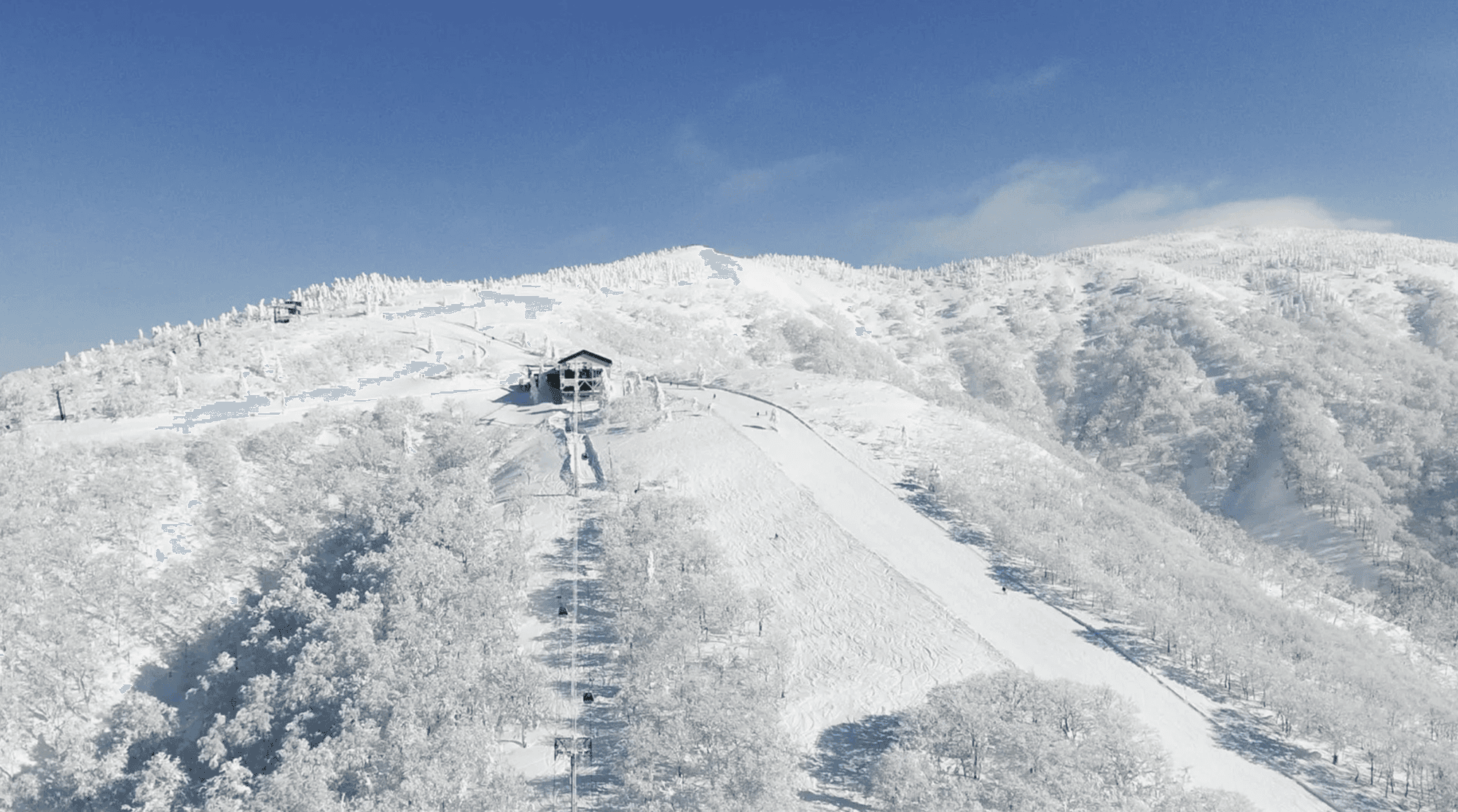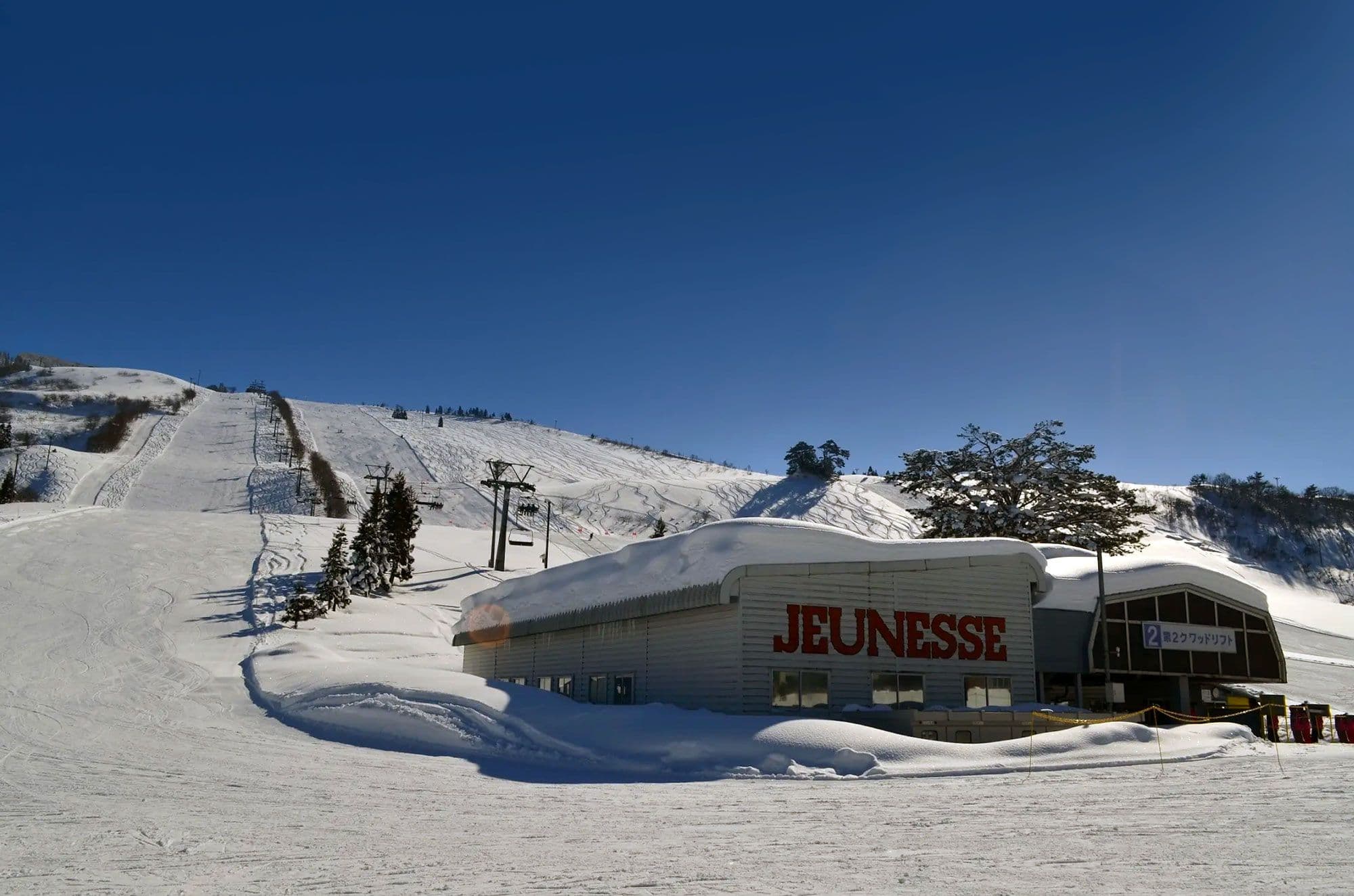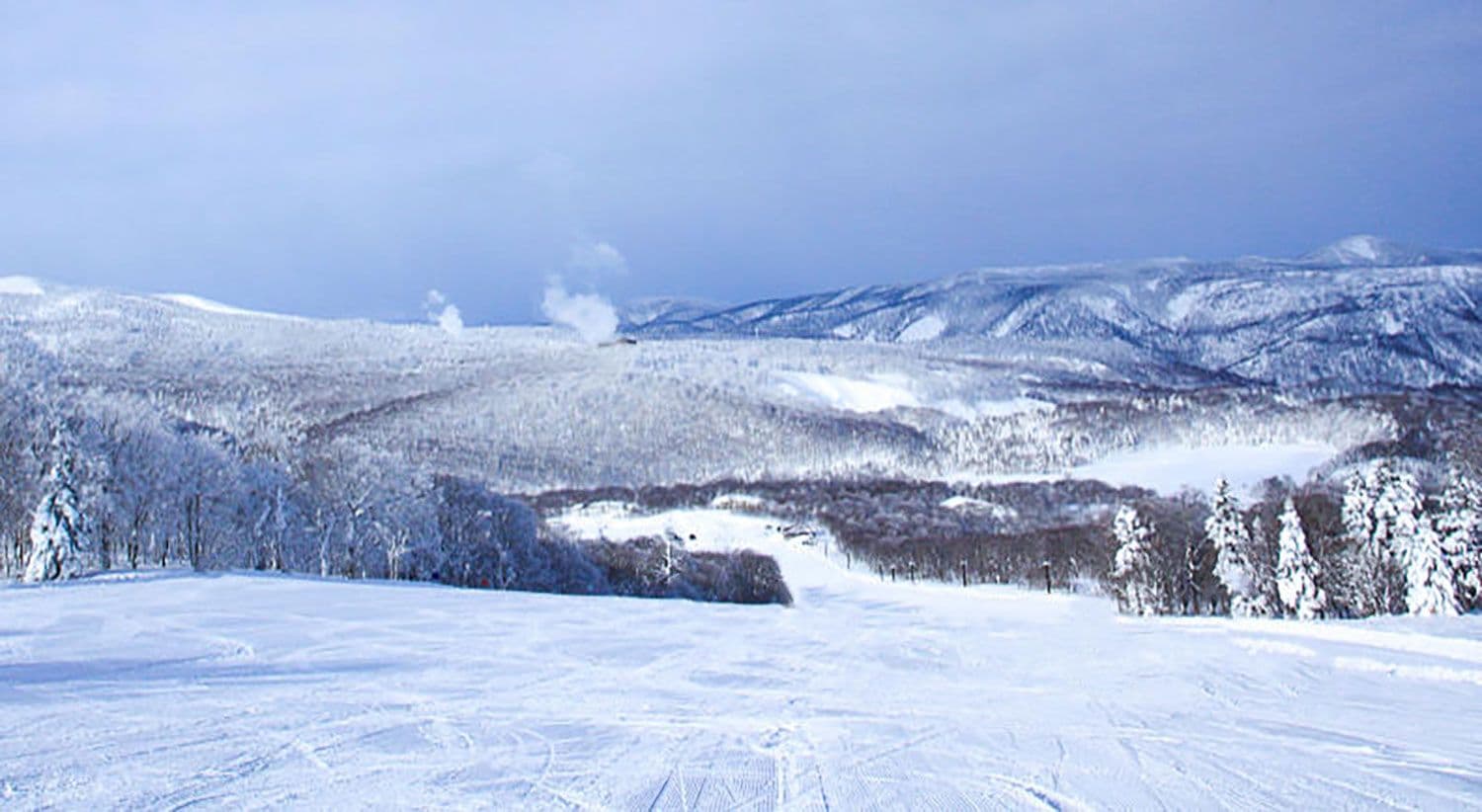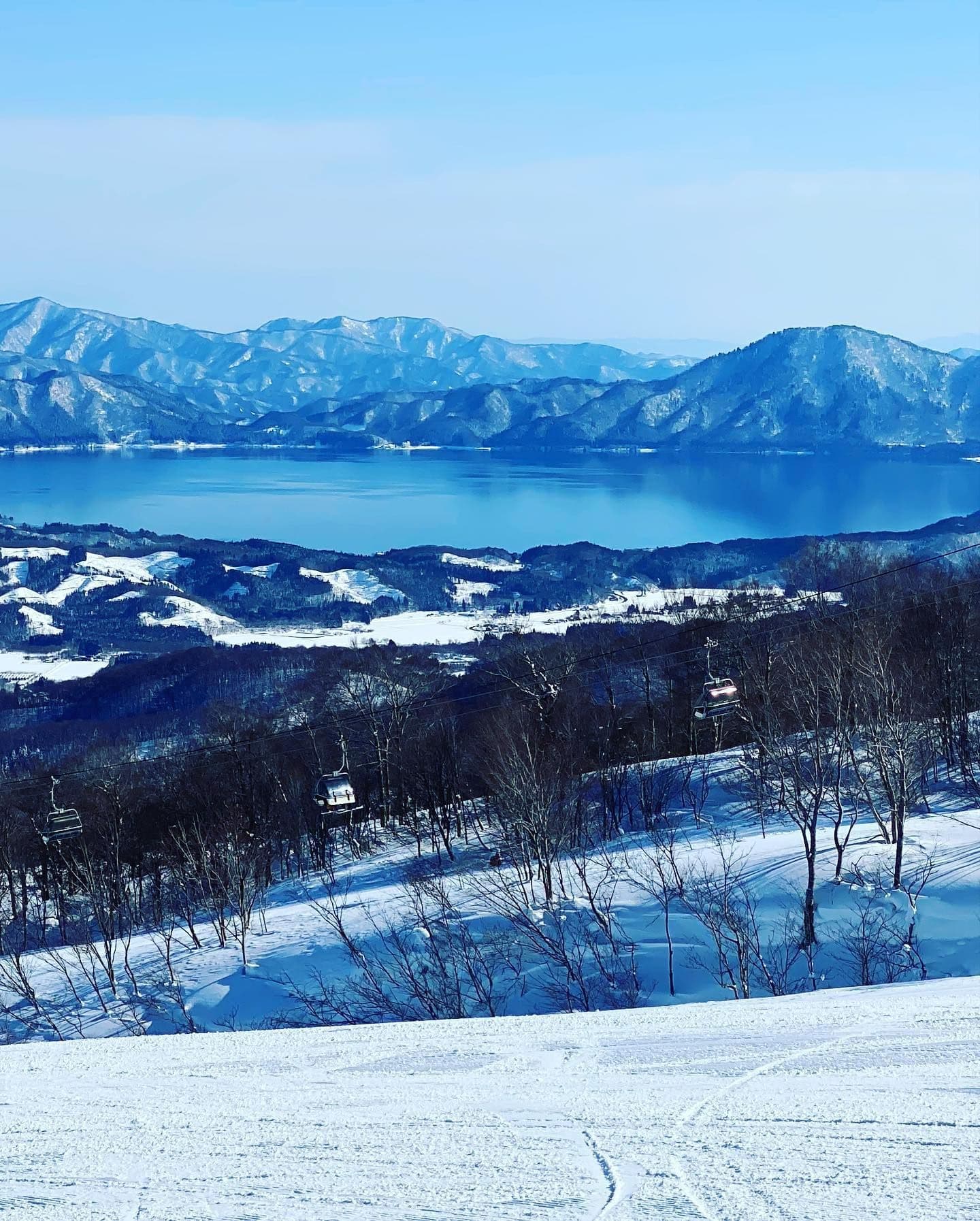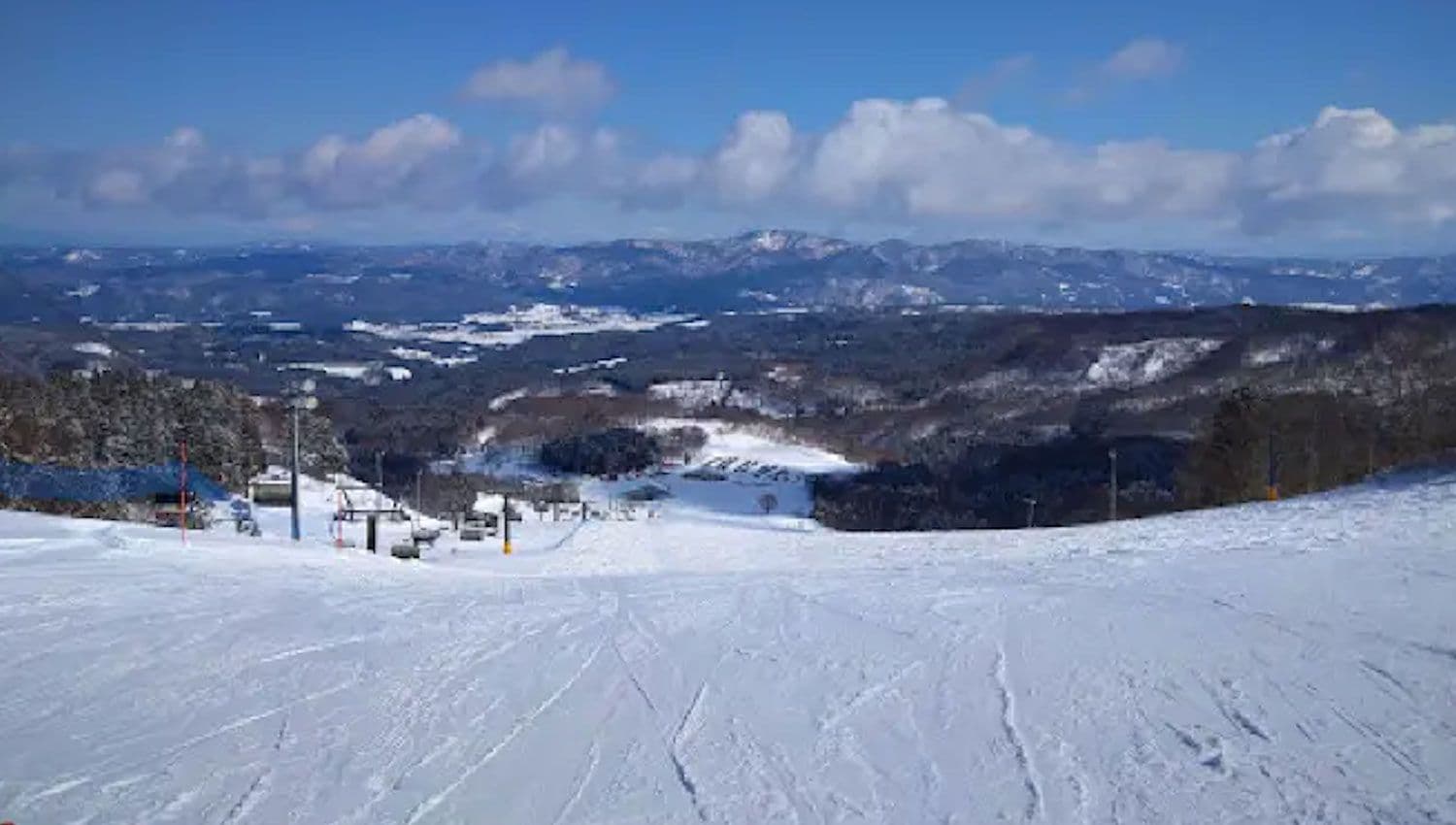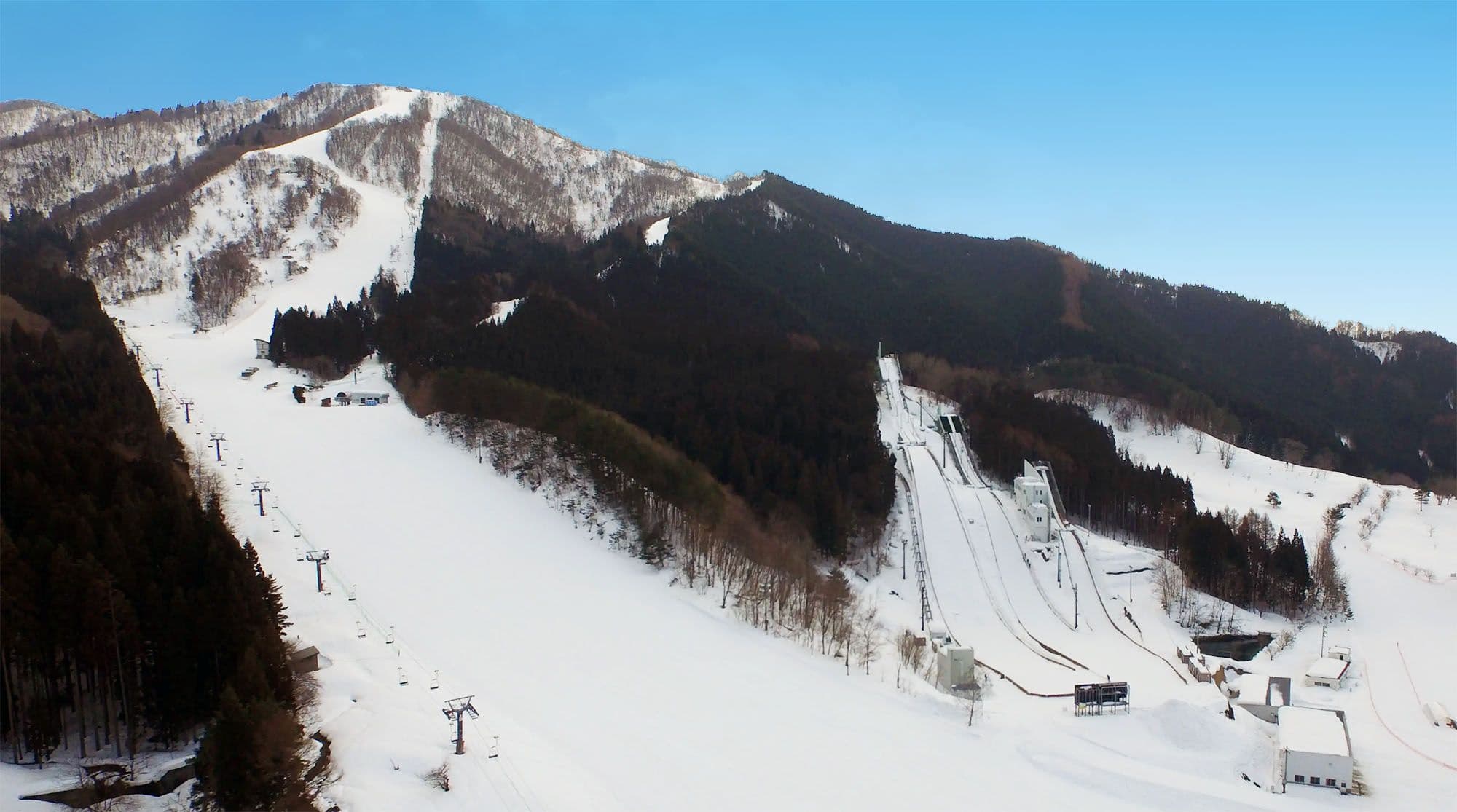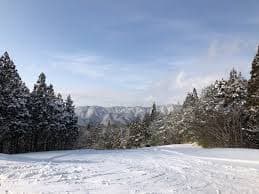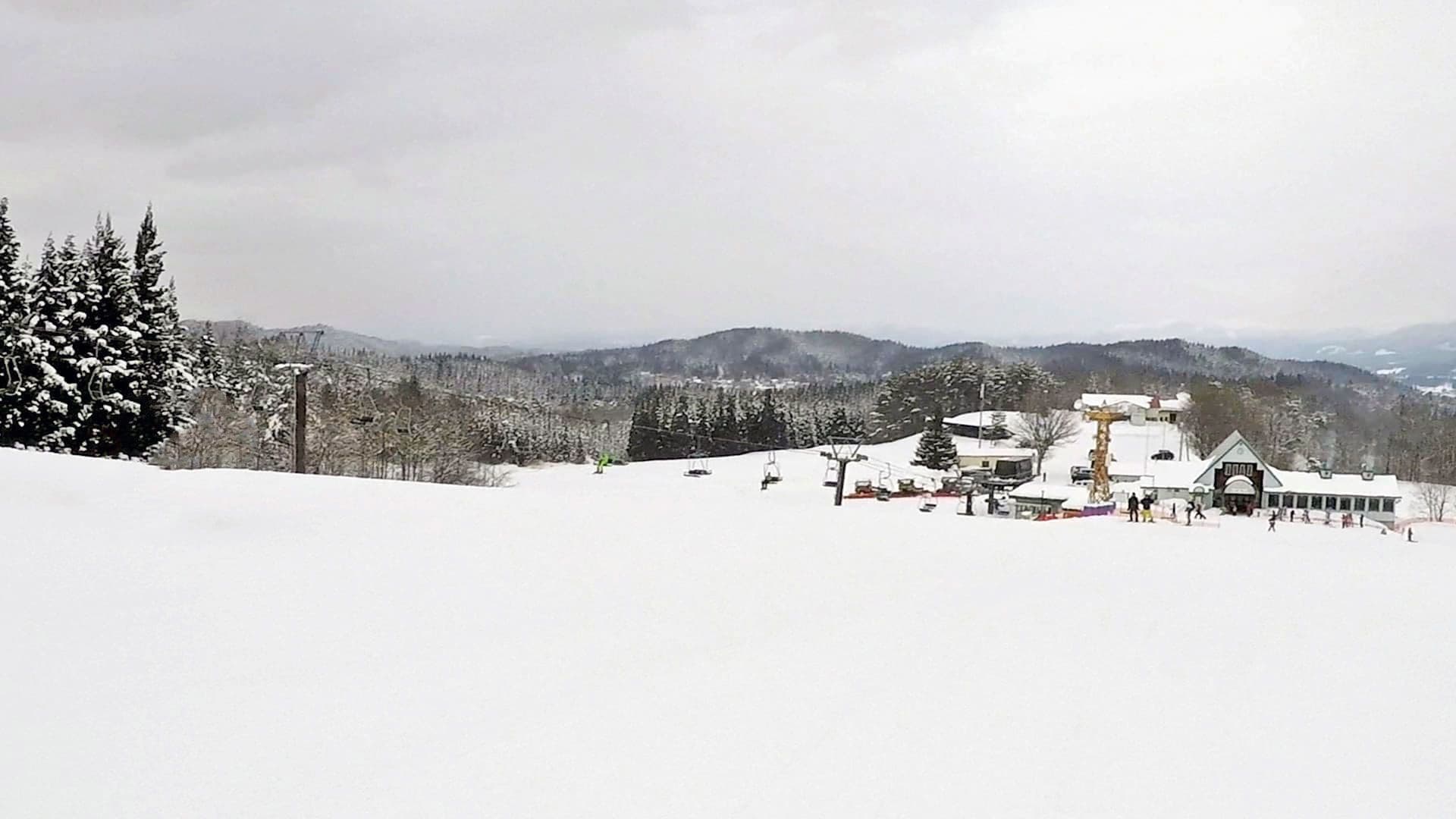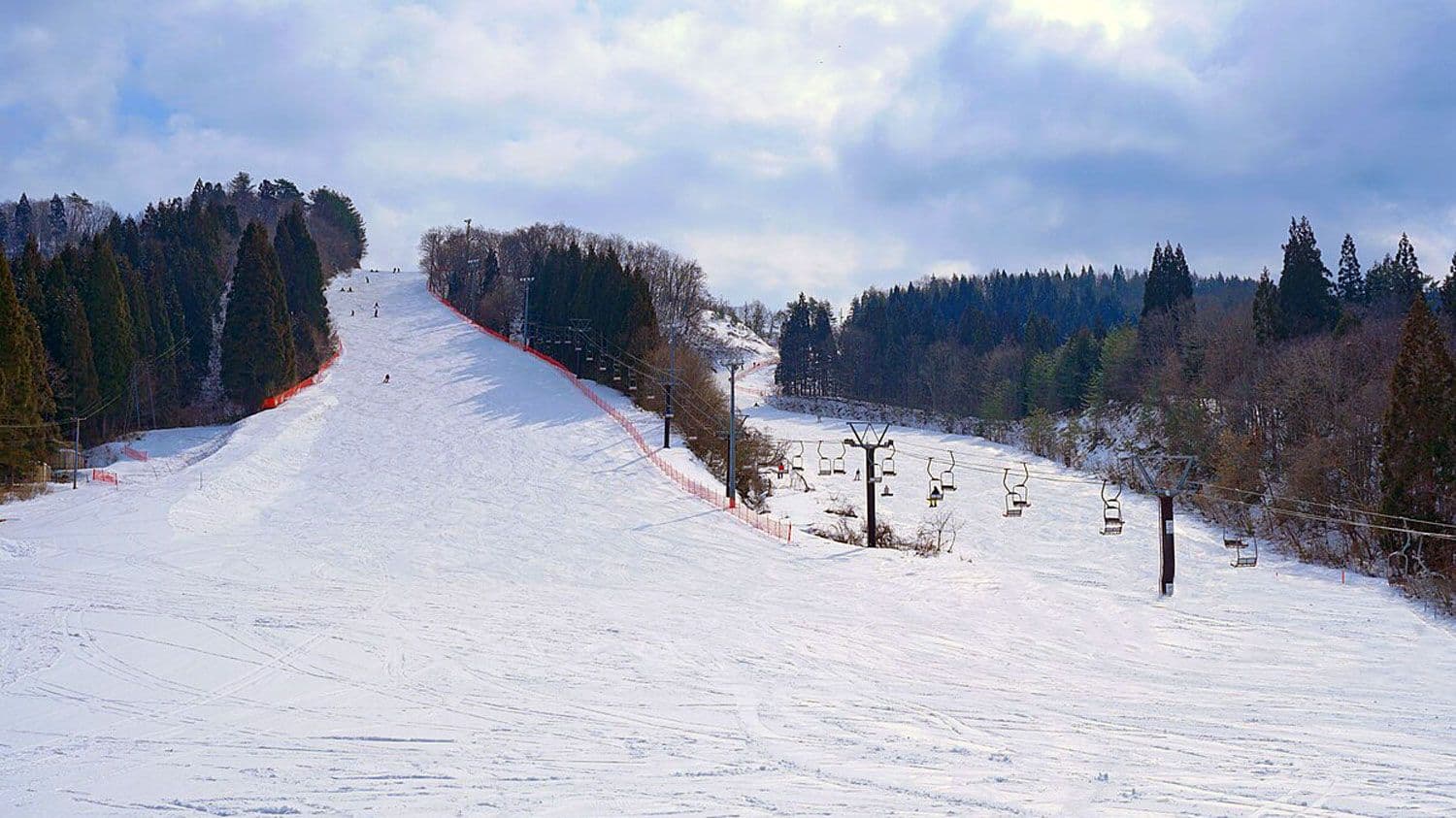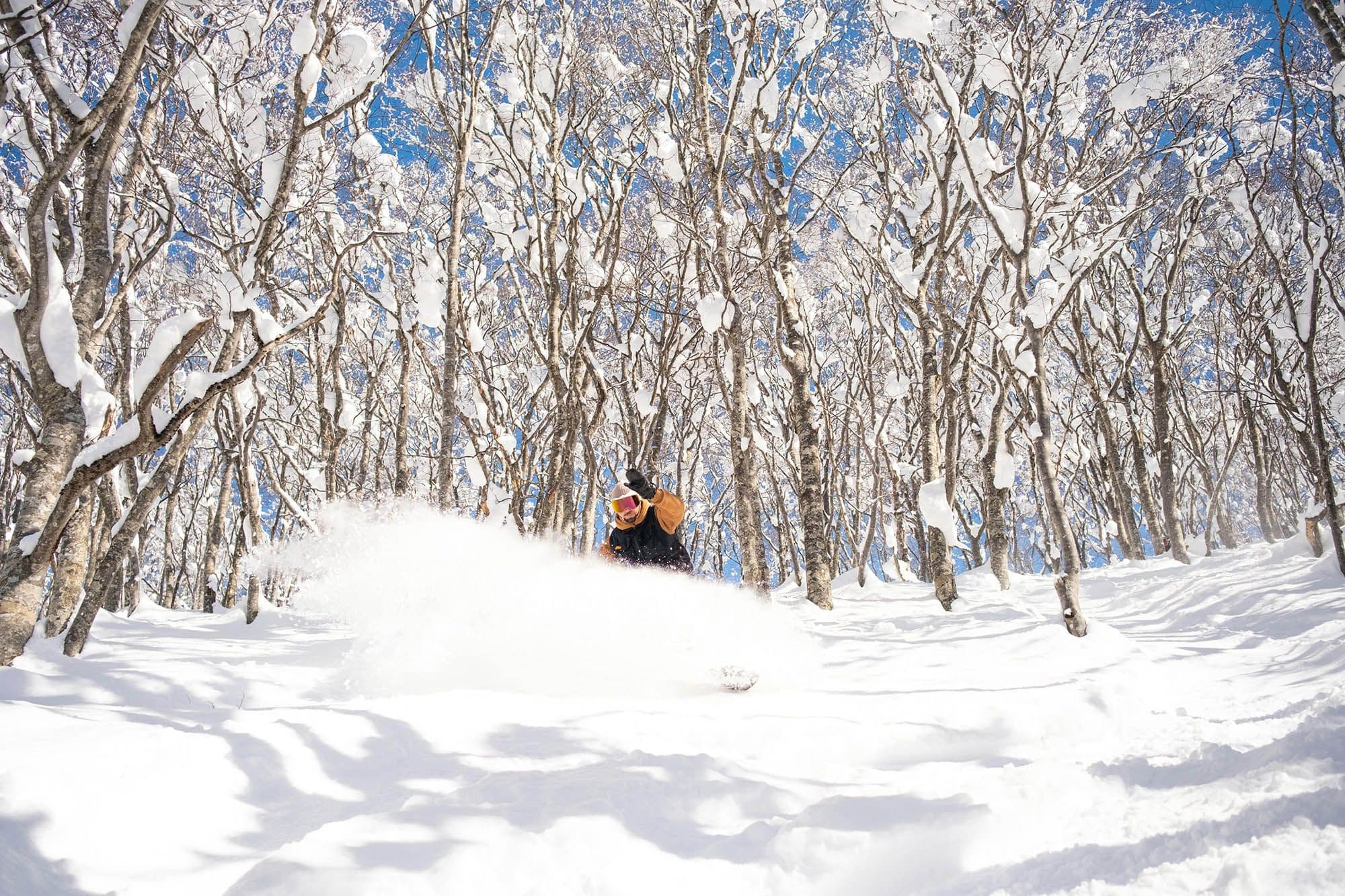
秋田
Akita
Sea-effect storms, beech forests, and steaming onsen
Akita is where the Sea of Japan’s winter engine meets big beech forests and old-school hospitality. Storms march in across the water, stack up on the Ou Mountains, and drop the good stuff — dry, chalky powder that fills in gullies and glades like clockwork. It’s classic Tohoku: colder temps, fewer people, and that “did we just score this on a weekday?” grin.
Terrain-wise, think fun fall-lines and natural features over mega resort flash. Tazawako wraps around Japan’s deepest lake with clean pitches, playful side hits, and views that slap on bluebird. North of there, Ani (Mt. Moriyoshi) is a beech-tree dream with snow monsters (juhyo) and storm-day lines that ride like they’re drawn with a ruler. Thread in some smaller locals and you’ve got a circuit that rewards exploring.
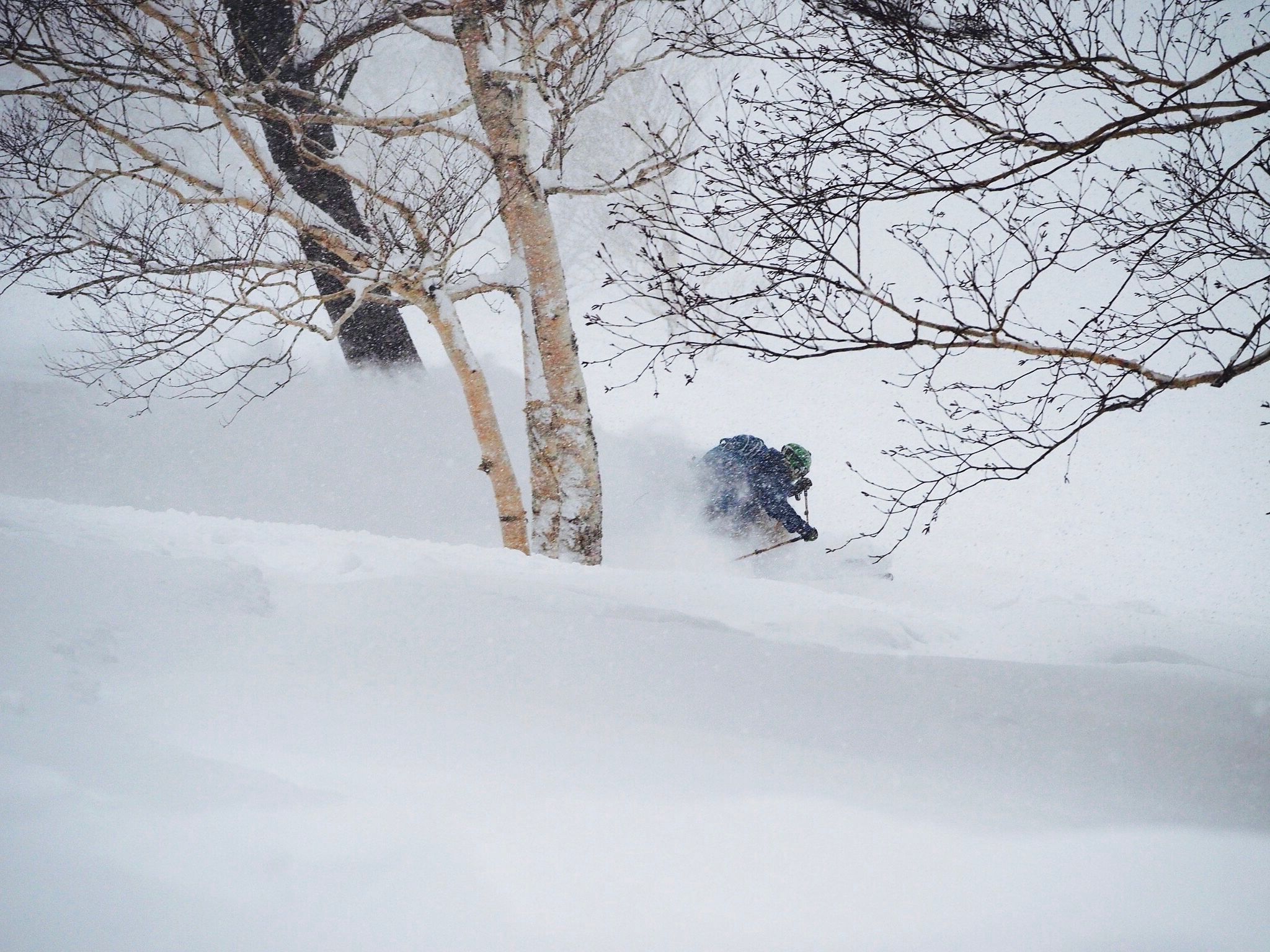
Travel vibe? Low-stress and super local. Kakunodate — the samurai-town station on the Akita Shinkansen — is your slickest base for Tazawako. Nyuto Onsen hides up the valley with ryokan, log fires, and outdoor baths that steam while flakes drift down. Up north, Odate and Aniai set you up for Ani days and proper countryside eats.
Insider tip: Book a AWD rental and play the isobar game — Tazawako when the southwest hits, Ani when the north unloads. Sleep at Nyuto Onsen for the soak —> shovel —> first chair trifecta.
All Akita Reviews

Akita Hachimantai
Tiny lift, true winter — a quiet powder outpost
8.2
Ani
Deep Tohoku pow, quiet vibe, big trees
8.6
Chokai Kogen Yashima
Parky little powder stop with a big local soul
8.1
Hanawa
Quiet race hill with views — bring your edges, not your snorkel
8.0
Jeunesse Kurikoma
Tohoku’s hush-hush powder playground
8.4
Kyowa
Small hill, big stoke for locals
8.0
Suishozan
Small hill — the mellow heart of Kazuno pow
8.0
Taiheizan Opas
Akita’s city-side night lights and easy turns
8.0
Tazawako
Japow’s Local Secret with a Lake View
8.7
Find Your Flow
Use these quick-hit categories to zero in on the vibe you want — from storm-day trees to mellow night turns with the kids.
Top Resorts by Snowfall
Sea-effect reloads, day after day.
Uncrowded Resorts
Turns after noon that still feel first-track fresh.
Top Resorts by Ability
Pick a hill that fits your legs and headspace.
Tree Skiing
Buna (beech) labyrinths with silky fall-lines.
Big Mountain Vertical
Long rippers that torch quads, not stoke.
Family Friendly
Gentle greens, warm bases, cocoa within arm’s reach.
Night Skiing
Glow-lit cord and sneaky storm sprinkles.
Best Value Resorts
Local prices, maximum smiles per yen.
Powder Hunter’s Choice
Deep, quiet, and properly spicy terrain.
Getting There
- Rail: Tokyo —> Kakunodate on the Akita Shinkansen; local bus to Tazawako Ski Resort.
- Drive: Tohoku Expressway exits for Kakunodate / Odate; winter tires are non-negotiable.
- Air: Akita Airport (AKJ) for the southern half, Odate–Noshiro (ONJ) for Ani access.
- Local links: Akita Nairiku Line to Aniai for Ani; resort shuttles run in peak season — check the day before a storm.
When to Go
- Late Dec — early Jan: Base builds fast; trees start to turn on.
- Jan — Feb (prime): Cold temps, frequent resets, best shot at bottomless beech-tree days.
- Mar: Classic Tohoku spring — chalk in the shade, corn after lunch, emptier hills.
- Holidays: New Year and mid-Feb weekends get busier — go early or go midweek.
Money & Logistics
- Lift tickets: Friendly prices compared to headline Japanese resorts.
- Pass hacks: Midweek and combo tickets pop up — watch resort sites and town TIC boards.
- Cash vs cards: Cards are growing, but carry some yen for noodle shops and mom-and-pop ryokan.
- Gear: Rentals at Tazawako and Ani are solid; bring a 100–110 mm daily driver if you can.
- Safety: Respect ropes and gate systems; avy kit and partners for sidecountry and backcountry days.
Language & Etiquette
- Lines: Polite queues, boards off in tight gondolas, no shoulder-charging.
- Onsen: Rinse first, no suits, keep towels out of the water; some baths ask to cover tattoos.
- Dining: Small rooms — be patient, learn a couple basics (「お願いします」 / onegaishimasu, 「ありがとうございます」 / arigatō).
- Leave no trace: Pack out trash; respect quiet towns at night.
Nearby Adventures
- Nyuto Onsen loop: Tazawako laps —> dusk soak at Tsurunoyu or Kuroyu.
- Ani storm mission: Beech-tree mazes and juhyo sightseeing when it’s nuking.
- Culture fix: Samurai streets in Kakunodate, cedar craft in Odate, sake tastings across the valley.
- Rest-day wanders: Frozen Lake Tazawa viewpoints or driftwood beaches on the Sea of Japan when the sun peeks.
